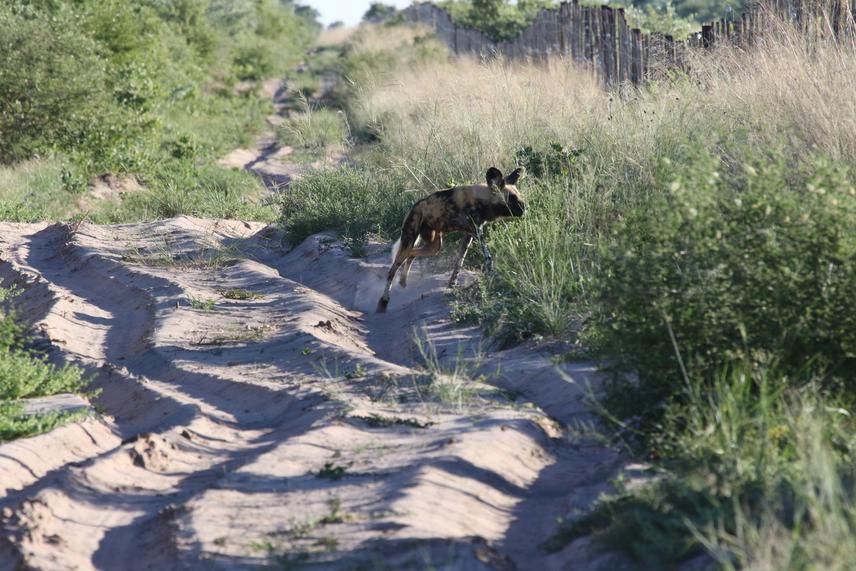Genevieve Finerty
This projects aims to provide useful information on the spatial and temporal patterns of predator movements across a protected area boundary and evaluate the long-term effectiveness of fencing as a conservation tool. By working closely with the NGO Leopard Ecology & Conservation, this project will add valuable information to the existing knowledge base on the carnivore populations in Khutse Game Reserve, Botswana.

The study area covers Khutse Game Reserve (KGR, 2,600km2) and the southern part of the Central Kalahari Game Reserve (CKGR, 54,000km2), Botswana. Climatically the area is semi-arid, with seasonal variation in temperature and precipitation. Together, the KGR and the CKGR make up one of the largest continuous reserves in Africa, and form the central section of the greater Kalahari ecosystem.
The lion and leopard populations here live at low density, with extremely large home ranges. Surrounding the reserves is grazing land used by farmers for livestock, in some cases directly bordering the reserve. In 2009 a fence was erected at the southeast border of the reserves in an effort to reduce conflict between predators moving outside the reserve and local cattle farmers. Over time, the fence has become increasingly permeable and large carnivores are observed to leave the park to hunt. This project uses experienced San trackers and camera traps to monitor and quantify predator activity along the boundary. Repeated spoor surveys will provide a broad picture, allowing coverage of a much larger area to examine spatial patterns in movements. Whereas camera traps will cover a smaller area, but provide much finer temporal data and allow for assessment of individual-level information on animals crossing the boundary.
San Bushmen are the indigenous peoples of southern Africa, with evidence of their presence in northern Botswana dating back over 70,000 years. Until very recently (1950s through to 1990s) they lived as hunter-gatherers in small, semi-nomadic family groups, moving seasonally to follow the availability of game and edible plants. The CKGR was a reserve created to protect the traditional territory of the Gana, Gwi and Tsila Bushman and the game they depend on. Although many San people now live as farmers in towns and villages (such as Kaudwane in our study site) as part of government-mandated modernisation programs, there are still eight settlements inside the CKGR. San trackers are well known for their outstanding abilities in tracking and interpreting animal spoor.